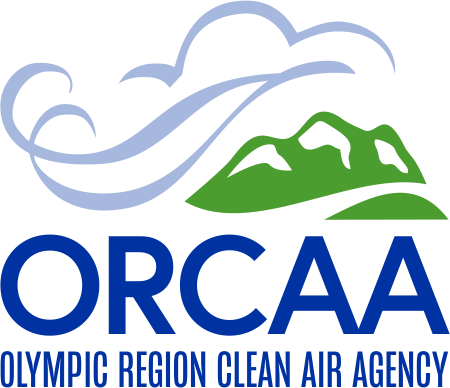
Wildfire smoke comprises a complex mixture of gases and fine particles. ORCAA and other air agency maintain a network of air quality sensors to monitor the amount of particulate matter (PM) pollution in the air. When wildfire smoke events (or even smaller smoke events from local sources) occur, you should check the air monitoring network regularly to stay informed.
Smoke from wildfires has an ever-increasing impact on our lives.
Even if there are no local wildfires threatening our communities, wildfire smoke is frequently transported great distances. In recent years, smoke from fires in Oregon, Montana, British Columbia, and even Alaska has caused elevated levels of air pollution in ORCAA’s jurisdiction.
Note that any smoky air can be dangerous. According to Washington State Department of Health (DOH), taking steps to protect your health is important for everyone, especially for:
- pregnant women
- people over 65
- babies and children
- those with heart or lung diseases.
Symptoms of Wildfire Smoke Exposure
Breathing wildfire smoke can cause or worsen health problems. Some symptoms of breathing including:
- burning eyes
- sore throat
- headache
- coughing
- wheezing
- shortness of breath
- worsening heart and lung conditions
Contact your health care provider if you have heart or lung problems when around smoke. Call 911 if you or someone else has serious symptoms—like trouble breathing.
Read more at Wildfire Smoke – ORCAA
